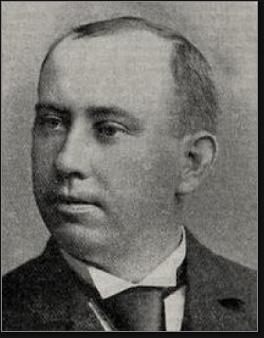
Sport: Baseball
Born: June 27, 1860
Died: August 27, 1925
Town: Trenton, New Jersey
Patrick T. Powers was born June 27, 1860 in Trenton, NJ. Pat had a sharp mind for numbers and a love for the emerging national pastime of baseball. Unfortunately, his diamond skills and beefy physique did not hold great promise for a professional career.
Minor-league baseball was thriving in New Jersey and, in 1883, a team formed in Trenton as part of the short-lived Interstate Association. The following year, Pat used his sharp communication and business skills to land a job managing the Trenton entry in the newly formed Eastern League in 1884, the Trentonians. The team’s marquee player was Jimmy Brouthers, brother of superstar Dan Brouthers. Pat’s first season at the helm was an unqualified success: The Trentonians won the Eastern League pennant.
Two years later, Pat was hired to pilot the Jersey City Jerseys. In his fourth year as field skipper, he defied the law prohibiting Sunday baseball. For many weeks, the team got away with fines that amounted to little more than a slap on the wrist but, in July, the city officially shut down Sunday ball and the team disbanded. Pat finished the season as manager of the Rochester Jingoes.
The following season, Rochester joined the major-league American Association as the Broncos. Convinced that Sunday baseball would transform the balance sheet of the sport, Pat continued to push the envelope in northern New York State—but unfortunately with similar results. He had better luck on the field, however. In 1891, Pat led the Buffalo Bisons to the Eastern Association pennant. That led to a manager’s job with the New York Giants in 1892.
Despite a roster featuring Amos Rusie, George Gore, Buck Ewing, Willie Keeler, Jim O’Rourke, Mickey Welch and Jersey-born stars Hardy Richardson and Mike Tiernan—the Giants finished the season with a losing record and Pat was replaced by John Ward. That would be Pat’s final managing job.
Pat stayed in New York City and became president of the Eastern League. During an era when minor-league talent was regularly pirated by National League clubs, he worked to strengthen the Eastern League and the minor leagues as a whole. In 1901, Pat was named the first president of the National Association of Professional Baseball Leagues, an organization that formalized the relationship between the minors and majors. Not surprisingly, Pat focused on placing clubs in cities that allowed Sunday baseball. Pat ran the Eastern League and NAPBL out of an office in the old Madison Square Garden on 23rd Street in Manhattan, where he doubled as a sports promoter. He managed several boxers and popularized bicycle races, including the marathon six-day events that helped pro cycling grow on both sides of the Hudson River.
Over the years, Pat forged friendships with many people in sports. One was James Sullivan, head of the AAU. Another was Garry Hermann, owner of the Cincinnati Reds and president of the National League. In 1913, following the AAU’s disqualification of Jim Thorpe for playing minor-league ball (forcing him to return his Olympic medals), there was a feeding frenzy among major-league clubs for his services—primarily as an attendance draw. Thorpe signed a $15,000 deal with the Giants. Pat found out later that, had he introduced Sullivan and Hermann, Thorpe would probably have ended up in Cincinnati. Four years later, he did.
In 1915, Pat partnered with oil magnate Harry Sinclair to bring big-league ball to Newark in the form of the Federal League Peppers. Sunday ball was still illegal in New York, so their calculation was that baseball fans from the city would gladly hop a train from Manhattan to Harrison (where the ballpark was located) under the new Hudson River tunnels. They were wrong. Attendance never met their expectations and the league folded that winter.
Pat’s contributions to baseball were well-known during his lifetime. He was genial, persuasive and lauded for his oratorial skills. His fearless defiance of the major leagues was later recognized as a game-changing moment. Pat spent his retirement years in Jersey City and Belmar, where he had a summer home. He suffered from declining health, including a diabetic condition. He passed away from a neck infection that turned gangrenous, possibly caused by a dirty collar button.